Are Ball Pythons arboreal? No they aren’t, and their care should cater to their terrestrial habits. Let’s take a closer look…
Ball pythons are terrestrial snakes, that spend a great deal of time hunting and resting in rodent burrows. Though they may occasionally climb to get food or escape floods, they are not an arboreal species. In captivity, we must make sure that we give them the correct husbandry to reflect their terrestrial habits.
In this article, I’m going to give you a morphology-based explanation of how we know that Ball Pythons are terrestrial (ground dwelling), rather than arboreal (tree dwelling). I’ll also show what some truly arboreal and semi-arboreal snakes really look like…
Do Ball Pythons climb trees?
Very occasionally, Ball Pythons will climb trees. If their burrow is flooded, or they’re hungry and there’s a tempting nest-ful of baby birds just waiting to be eaten. This doesn’t mean they’re arboreal though – not even close!
Every species engages in atypical behavior in certain circumstances. I’ve seen plenty of terrestrial and even fossorial snake species climbing. Saying that this makes them arboreal is like saying that I naturally live at the dentist because I’ve been observed going there on one or two occasions!
So no, just because Ball Pythons will climb trees at times, it doesn’t mean we should give them arboreal setups in captivity. In fact, there is overwhelming evidence to suggest that Ball Pythons are not arboreal. They are a familiar resident in scrub and farmland in their natural distribution.
In Ghana, Togo and Benin, countless local snake hunters have made their living from catching and selling this species. Guess where they look for them – in rodent burrows.
In fact, in his recent Ball Python documentary, Dav Kaufman repeatedly asks local Ball Python catchers and breeders where the snakes live. (you can find it on his Youtube channel). Do they live in trees? Can you find them in trees? The answer is always the same: you see them in trees only if heavy rains have flooded the burrows they usually live in!
Asides from this type of anecdotal evidence, it only takes a reasonable level of reptile knowledge to see that a Ball Python is a terrestrial species. Its girth in proportion to its length alone is enough to tell you that it is too chunky to be a great climber.
Do Ball Pythons like to climb?
Ball Pythons don’t necessarily like to climb – it’s more that they will do it if they think it’s necessary. If a Ball Python is getting really hungry, and no food is around, they’ll try climbing something to look for some. Likewise, they’ll climb if they’re looking for a mate, in the hopes of escaping and finding one.
They aren’t very good at it, and sometimes they fall off of things. But any animal will climb sometimes, especially if its hungry. It doesn’t mean that’s what they do all the time.
I’ve literally seen Box Turtles (Terrapene sp.) climb chain-link fences. From what I’m told, Wood Turtles (Glyptemys insculpta) are actually a lot better at it than them, with some people claiming to have seen them reach 6 feet above the ground.
But no one is going to try to tell you that a Wood Turtle is arboreal, and that you should provide them with a 9ft tall enclosure and high branches.
Conversely, I have had Ball Pythons “experts” tell me just that. Which brings us to the crux of the semi-arboreal myth…
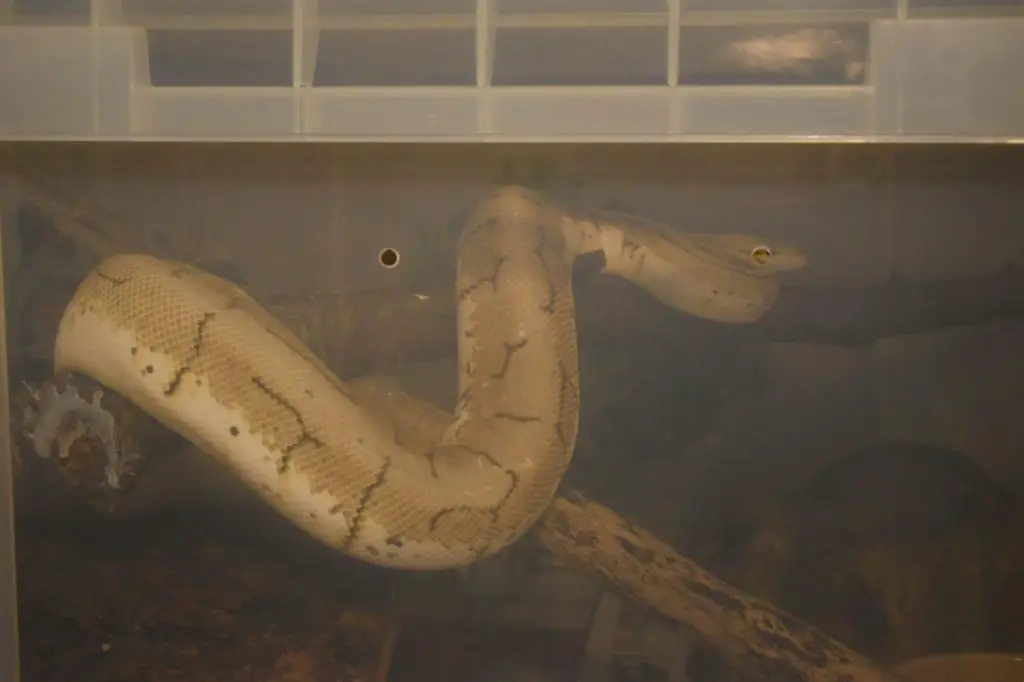
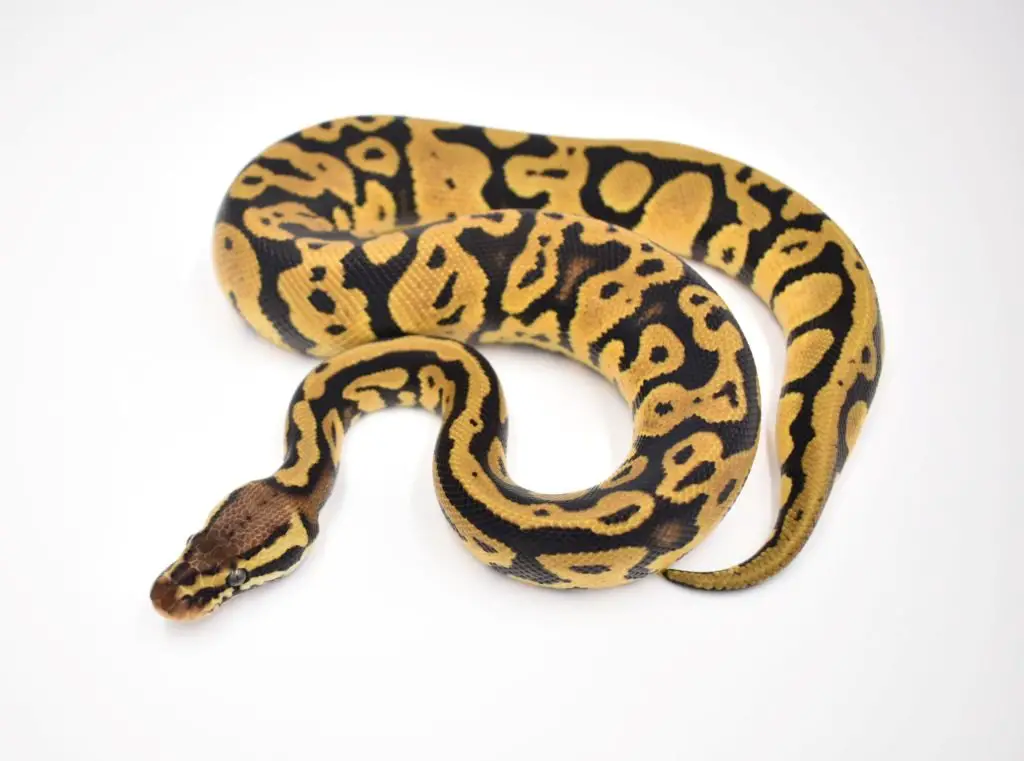
Why have we been told Ball Pythons are arboreal or semi arboreal?
Wayyy back in 1997, a study was published in the Italian Journal of Zoology called: Sexual size dimorphism and natural history traits are correlated with intersexual dietary divergence in royal pythons (python regius) from the rainforests of southeastern Nigeria.
This study found that in parts of south-eastern Nigeria, male Ball Pythons were more often encountered in trees than females. It also found that 70.2% of the dietary intake of males surveyed was made up of birds.
This study was seized upon by a lot of keepers/online entrepreneurs as “proof” that Ball Pythons are semi-arboreal. But there’s a few problems with this. They are as follows:
- The authors explicitly said this was evidence for behavioural/dietary preferences in south-eastern Nigeria – they never made the claim that this is how the species behaves elsewhere.
- The study was carried out during the rainy season, when we know that Ball Pythons get flooded out of their burrows and climb rather than drown. It’s survival rather than preference.
- In the discussion section, the authors clearly state that opportunism probably plays a role in the male Ball Python behaviour in this case. They’re out of their burrows – they can climb higher than females – and boom! There’s some wiggly baby birdies in front of their noses. They do what any self-respecting constrictor would and eat them.
- South-eastern Nigeria is rainforest and swamp – not typical Ball Python habitat.
In all honesty, I could probably some this up a little more simply by just saying: two Europeans went to the rainforest during the rainy season. They found male Ball Pythons in bushes and trees more often than females, and they got to eat baby birds because they could climb higher.
If the same study had been done in savannah (where there are less trees), or not during the rainy season, it would not have gotten this result!

Reasons the semi-arboreal myth spread like wildfire
1. Affiliate links for bloggers and Youtubers
The number one reason this myth spread is that it is profitable, and a lot of the resources we rely on want to make money. I want to make money from this site too – but I’d rather do it without too many affiliate links. In fact, I try to never add more than a couple per post or video. Let me explain why…
Ever notice how even some of your favourite Youtubers/bloggers turn around one day and start saying “hey, let’s look at the BEST Ball Python enclosure!”. Then they go on to explain that they’ve abandoned tubs, and now opt for big PVC enclosures which literally cost several hundred dollars more?
Well, scroll down and below the video you’ll see a load of links to products. These are affiliate links, and every time you buy something through one of these the Youtuber/blogger gets a cut.
If you encourage your followers or readers to use bigger, taller, more complicated enclosures, then you make more money from them.
2. People gain notoriety by attacking conventional wisdom
Ever wonder why conspiracy theories spread so well? It’s because, for whatever reason, information that challenges conventional wisdom attracts a lot more attention. Think about it. What get’s your attention more quickly:
A. Kevin McCurley, Dav Kaufman, and all those guys are completely right when it comes to keeping Ball Pythons.
Or…
B. Everything we’ve been told about keeping Ball Pythons is WRONG! They were semi-arboreal all along!
Obviously, B. is the one that catches the eye. This is classic clickbait and it works! If not, there wouldn’t be so many people believing that the earth is flat and space is fake (real conspiracy theories, by the way).
3. Conscious or unconscious bias in favour of Europeans and scientists
Let’s be honest. Two white Europeans did one study, and a whole bunch of keepers chose to believe that over the testimony of literally hundreds of Ghanaian and Togolese snake catchers.
Need I say any more?
4. Dislike for Ball Python breeders and racks
Lots of people in the reptile hobby, in wildlife charities, and even the field of herpetology hate both Ball Python breeders and racks. We have a serious PR problem!
What do arboreal snakes look like?
This is the question we should be asking. To know what a terrestrial snake looks like, it’s makes sense to examine the characteristics of arboreal ones.
1. The Asian Vine Snake (Ahaetulla prasina)
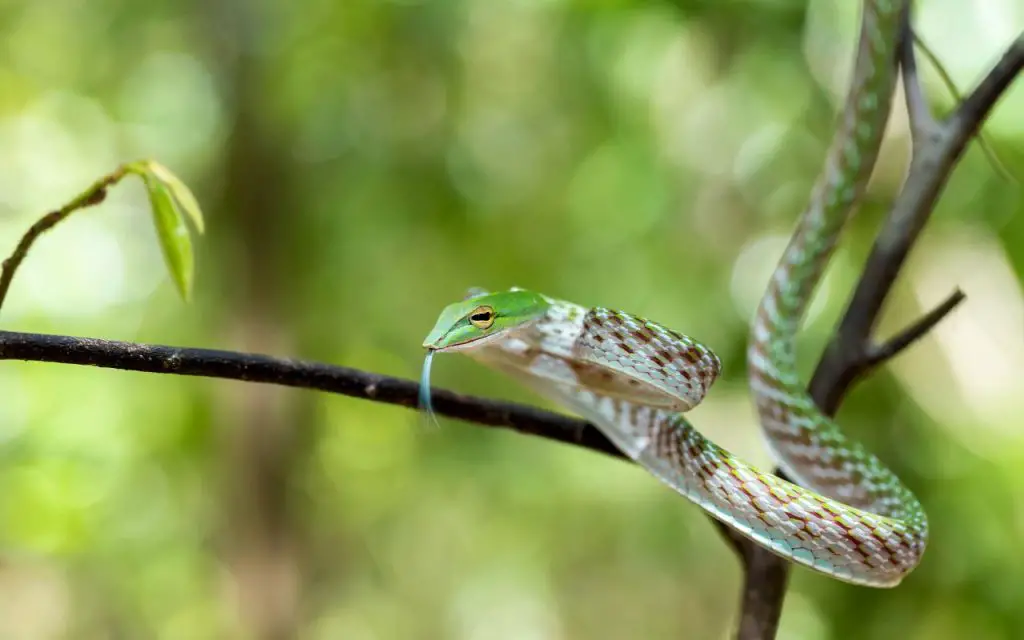
A truly arboreal species this snake has several features that are specifically suited to climbing. First of all, it’s green and brown – not a bad start if you live in tree.
It also has an extremely slender body which is the same width all the way down to the tail. Clearly, it’s evolved to be as light as possible for gliding through the branches.
Finally, it also has a ridge along each outer edge of its ventral scales. This is essential for gripping bark and thicker branches.
2. The Green Tree Python (Morelia viridis and Morelia azurea)

This species isn’t as slender because it’s a python. You can only diverge so far from your ancestry before becoming else entirely, after all.
However, it has a signature move that allows it to conserve energy and limit climbing exertion. This is its pose, which you can see in the photo. It balances itself on a branch, with an equal weight of coils on either side and waits in ambush.
Two other tell-tale signs of its arboreal nature are its green coloration, and its slender tail. When compared to Ball Pythons, this tail is so small and thin that it makes trying to sex baby GTPs very likely to damage them.
3. The Eastern Rat Snake (Pantherophis alleghaniensis)
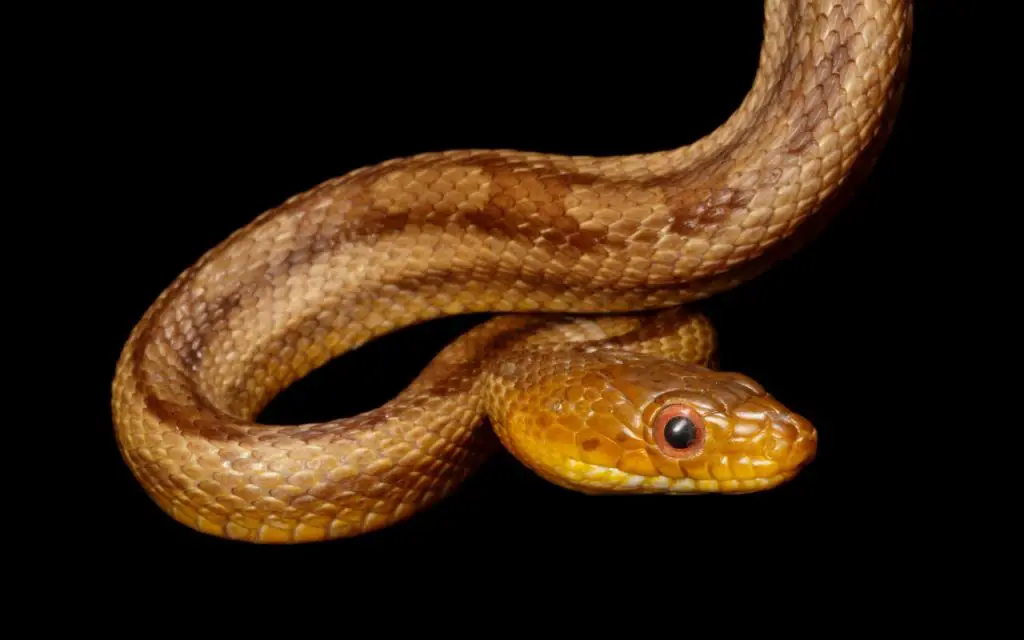
This species is semi-arboreal, meaning they habitually climb trees but are often encountered on the ground too. Though less specialised than the previous two, they nonetheless have a slim body of even thickness, and a ridge on the outer edge of each ventral scale.
Arboreal vs non-arboreal snake morphology…
| Arboreal snake | Non-arboreal snake |
| wider ventral scales | narrower ventral scales (not always) |
| thinner, prehensile tail | thicker tail, prehensile or not |
| rectangular or triangular body | cylindical or breadloaf shaped body |
| ridge on edge of ventral scales | ventral scales flat |
| heart nearer head | heart nearer middle of body |
Comparison with Ball Python morphology
Now that we’ve seen some truly arboreal and semi-arboreal snakes, let’s see how Ball Pythons measure up:
- They have much thicker body, that gets wider at the midsection
- Their tail is thick and prehensile, rather than thin and prehensile -making it perfect for anchoring in a burrow while fighting prey
- They have a slim neck, which makes it easier to wrap it around prey and constrict them in the tight space of a rodent burrow
- They have a roughly cylindrical body
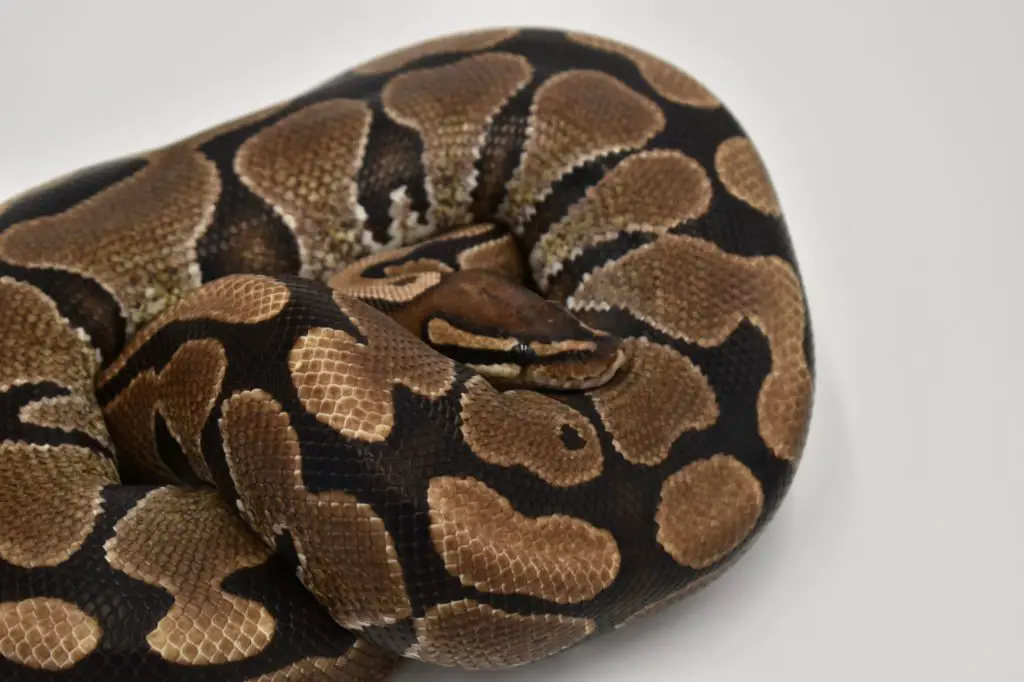
What is the best environment for a Ball Python?
So we now know that a lot of us got taken for a ride. Ball Pythons aren’t arboreal or semi-arboreal, and they don’t need tall enclosures. What they need is an enclosure that is wider than it is tall – and includes plenty of hiding places. They should be able to explore on the ground, and always be able to quickly move to a hiding place if they want to.
But that doesn’t mean we can’t give them things to climb. Just be aware that if you give them an enclosure that is too tall, they will feel insecure and feed less often, if at all.
Larger, taller enclosures are also worse and maintain the correct heat and humidity. My advice is if you want to give your Ball Python climbing options, then by all means do.
Just find a compromise in your setup. My baby Ball Pythons and even some of the adults climb on occasion, and they are happy with just a couple of low branches. An enclosure that is 12 to 18inches tall is more than enough height for them to do a little climbing.
Ball Python climbing accessories
As I mentioned before, these snakes obviously don’t need huge branches and tall enclosures. In fact, a lot of mine are too lazy to climb now. I use tubs or racks depending on what their temperament is like and right now I have a whole rack full of adult snakes that simply can’t be bothered climbing!
For those that do climb, though, I find that they like to have obstacles and low branches to climb over. The tub below is a perfect example of how I do this. It houses a 3 month old female.
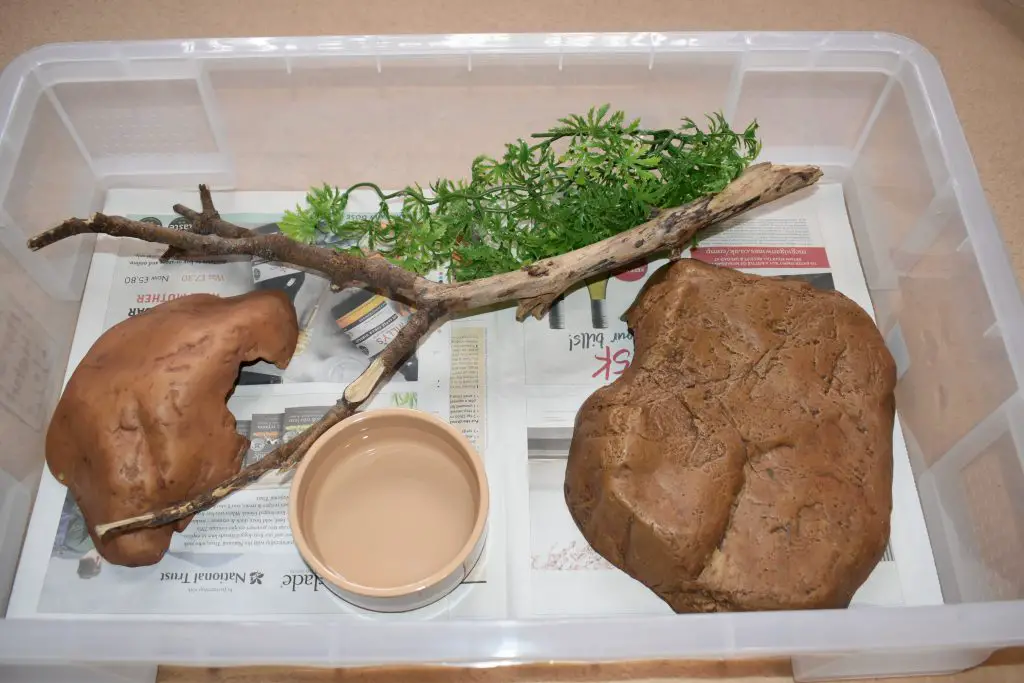
Are Ball Pythons arboreal? Conclusion
Ball Pythons aren’t arboreal, or even close. They just climb when they have to, like any of use would if rising waters were flooding us out of our homes.
Sadly, this myth took hold for a few reasons, some of which aren’t all that pleasant to think about. The positive that we can take from this though, is that a lot of the old-school breeders and keepers who told us that Ball Pythons were terrestrial were completely right.
Next time they tell us something, let’s sit up and pay attention.
Also on this topic:
- Can Ball Pythons live together?
- Do Ball Pythons like tubs?
- How to find an escaped Ball Python
- Why is my Ball Python trying to escape?
For more on enclosures:
Back to main enclosure page
